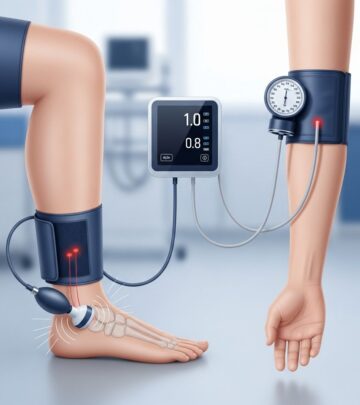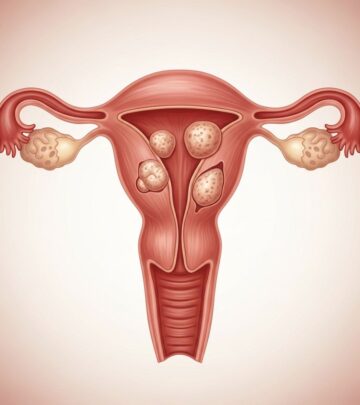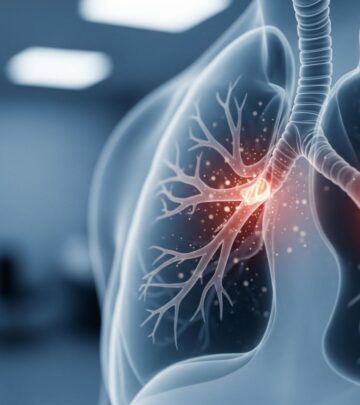Tonic-Clonic (Grand Mal) Seizures: Symptoms, Causes, Risks & Treatment
Understanding one of the most dramatic seizure types, its causes, symptoms, risk factors, and approaches to treatment for enhanced patient care.

Tonic-Clonic (Grand Mal) Seizure Overview
Tonic-clonic seizures, historically referred to as grand mal seizures, are among the most recognizable and dramatic forms of seizure disorders. Characterized by loss of consciousness and violent muscle contractions, they can affect anyone, regardless of age or background. During these episodes, an abnormal burst of electrical activity disrupts normal brain function, often resulting in sudden changes in movement and behavior. Seizures can be focal—originating in a specific part of the brain—or generalized—affecting the entire brain. Tonic-clonic seizures may start as focal episodes and progress to involve all brain areas.
Symptoms of Tonic-Clonic (Grand Mal) Seizures
The hallmark symptoms of tonic-clonic seizures typically emerge in two distinct phases:
- Tonic phase: Sudden muscle stiffening causes the person to collapse or fall.
- Clonic phase: Muscles alternately contract and relax, leading to jerking movements throughout the body.
Other symptoms may occur before, during, or after a seizure, including:
- Loss of consciousness or awareness
- Confusion or disorientation following the event
- Crying out or vocalizations at onset
- Drooling or frothing at the mouth
- Involuntary biting of the tongue or cheeks
- Loss of bladder or bowel control
- Temporary cessation of breathing, resulting in skin color changes
- Headache, drowsiness, or muscle soreness after the seizure
Symptoms can vary depending on whether the seizure is focal or generalized. Focal seizures may involve abnormal sensations, emotional changes, or movements limited to one area, and may or may not be accompanied by a loss of consciousness.
Typical Course of a Tonic-Clonic Seizure
- Warning signs (aura): Some individuals experience unusual sensations, such as visual disturbances, strange tastes or smells, or emotional changes prior to a seizure.
- Tonic phase: Sudden stiffening of muscles, especially in the arms and legs.
- Clonic phase: Rhythmic, jerking movements of muscles.
- Postictal state: Recovery period characterized by confusion, sleepiness, headache, and sometimes muscle pain.
Causes of Tonic-Clonic (Grand Mal) Seizures
Tonic-clonic seizures frequently result from epilepsy, a chronic neurological disorder marked by recurrent seizures. However, not all tonic-clonic seizures are due to epilepsy. Other triggers and underlying health problems include:
- High fever (especially in children; febrile seizure)
- Stroke
- Brain injury or trauma
- Infections (such as meningitis or encephalitis)
- Very low blood sugar
- Brain tumor
- Alcohol misuse or withdrawal
- Drug misuse (including amphetamines and cocaine)
- Lack of sleep
- Certain medications affecting brain chemistry
- Genetic disorders
The fundamental mechanism involves a sudden surge of abnormal electrical activity across many nerve cells in the brain, overwhelming the usual signaling pathways.
Types of Seizures: Focal vs. Generalized
Seizures are broadly classified based on their origin and effect in the brain. Understanding these distinctions helps clinicians diagnose and treat seizure disorders appropriately.
| Type | Description | Consciousness | Common Symptoms |
|---|---|---|---|
| Focal Seizures | Originate in one area of the brain | May or may not involve loss of consciousness | Altered awareness, unusual sensations, localized movements |
| Generalized Seizures | Affect all brain regions; may begin as focal and spread | Typically involve complete loss of consciousness | Convulsions, full-body muscle contractions |
Tonic-clonic seizures can begin with focal onset and progress to become generalized, encompassing the entire brain.
Risk Factors
Several factors increase the likelihood of developing tonic-clonic seizures:
- History of head or brain injury
- Stroke or other vascular issues in the brain
- Cognitive disorders (e.g., Alzheimer’s disease)
- Brain tumors
- Family history of seizures or epilepsy
- Alcohol or drug abuse
Genetic factors, including inherited changes in nerve cell function, may also play a role. Seizures can be triggered by physiological stressors such as illness, sleep deprivation, or sudden withdrawal from substances.
When to Seek Medical Attention
- If you experience a first-time seizure
- If a seizure lasts longer than five minutes
- If repeated seizures occur without full recovery between them
- If injury, difficulty breathing, or unusual symptoms occur during a seizure
- If you have underlying health conditions related to the seizure
Immediate medical attention can be life-saving and can help identify the underlying cause of the event.
Diagnosis of Tonic-Clonic (Grand Mal) Seizures
After a seizure, it is important to consult a healthcare professional for a thorough review. Diagnosis often involves:
- Detailed medical history and symptom review
- Physical and neurological examination
- Electroencephalogram (EEG): Measures brain electrical activity to identify abnormal patterns
- Imaging studies: MRI or CT scans to detect structural abnormalities, tumors, or injury
- Blood tests to identify infections, metabolic problems, or medication levels
These tests assess the likelihood of recurrence and guide ongoing care.
Treatment Options
Management depends on the cause, frequency, and individual patient needs. Many people who have a single tonic-clonic seizure do not require ongoing treatment. Recurrent seizures, however, often necessitate medical intervention. Treatment options include:
- Antiseizure medications: Daily medications to prevent future episodes
- Surgical interventions: For patients not responding to medication
- Dietary modifications: Such as ketogenic diets, under clinical guidance
- Lifestyle changes: Avoiding triggers like lack of sleep and substance misuse
The choice of treatment is personalized and may evolve over time.
Outlook and Complications
Most people regain full consciousness and recover after a tonic-clonic seizure, although postictal confusion, headache, and fatigue are common. Rare but serious complications include:
- Injury during seizures (falls, head trauma, biting)
- Breathing difficulties
- Long-lasting (status epilepticus) seizures requiring urgent care
With proper management and avoidance of triggers, many individuals can reduce seizure frequency and enhance quality of life.
Frequently Asked Questions (FAQs)
Q: What should I do if someone has a tonic-clonic (grand mal) seizure?
Protect the person from injury by clearing the area, cushioning the head, and turning them on their side if possible. Do not restrain movements or put anything in the mouth. Seek emergency help if the seizure lasts more than five minutes, repeats, or the person is injured.
Q: Are tonic-clonic seizures always related to epilepsy?
No. While epilepsy is a common underlying cause, seizures can also result from fever, injury, infections, substance withdrawal, or metabolic disturbances.
Q: Can tonic-clonic seizures be prevented?
Some cases are preventable by managing underlying health conditions, avoiding known triggers, and adhering to prescribed antiseizure medications. Regular check-ups and prompt treatment of infections or injuries can also help reduce risk.
Q: Is lifelong medication necessary after one tonic-clonic seizure?
No. Many people who have a single seizure do not require ongoing treatment, unless further episodes occur or underlying risk factors are identified.
Q: Is there a genetic link to tonic-clonic seizures?
Some seizure disorders, especially those associated with epilepsy, have genetic components. Family history can increase susceptibility.
Living with Tonic-Clonic (Grand Mal) Seizures
With proper management, many individuals live full and active lives. Recommendations for living well with seizures include:
- Taking medications consistently and as prescribed
- Identifying and avoiding triggers (e.g., lack of sleep, alcohol)
- Regularly consulting healthcare providers
- Maintaining a support system with family, caregivers, or advocacy groups
- Educating those around you about seizure first aid
Summary Table: Key Facts about Tonic-Clonic Seizures
| Aspect | Details |
|---|---|
| Typical onset | Sudden; may start as focal then generalize |
| Core symptoms | Muscle stiffening, jerking, loss of consciousness |
| Duration | Usually 1-3 minutes |
| Recovery | Postictal confusion, fatigue, headache |
| Main causes | Epilepsy, fever, trauma, stroke, infection, drugs |
| Treatment | Medications, lifestyle changes, in some cases surgery |
| When to seek help | First seizure, prolonged or repeated episodes, injury |
Conclusion
Tonic-clonic (grand mal) seizures are complex events requiring prompt medical evaluation, tailored treatment, and ongoing support. Despite their dramatic presentation, many patients can achieve seizure control and maintain quality of life with modern therapies and informed care strategies. Early recognition and intervention remain essential to minimizing complications and guiding recovery.
Read full bio of medha deb












